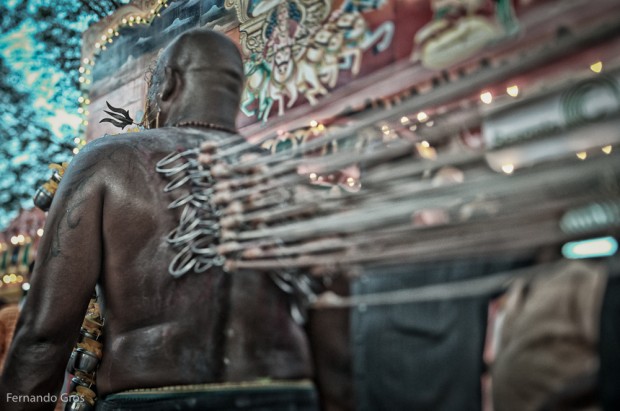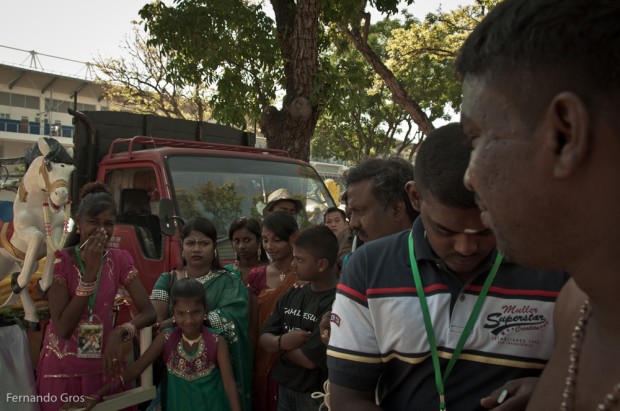Telling A Story – Choosing A Story
Last week I was in Penang, photographing the Hindu festival of Thaipusam. I was also joining a workshop run by Matt Brandon and Gavin Gough. One of my goals in attending the workshop was to become better at telling visual stories, or to put it another way, creating visual essays. The Assignment We were given […]
Last week I was in Penang, photographing the Hindu festival of Thaipusam. I was also joining a workshop run by Matt Brandon and Gavin Gough. One of my goals in attending the workshop was to become better at telling visual stories, or to put it another way, creating visual essays.
The Assignment
We were given the opportunity to join devotees (and their friends and family) as they prepared for and underwent the rituals associated with Thaipusam. This festival is perhaps best known for the dramatic piercings (spears, hooks & pins) that many (but not all) devotees undergo.
But, of course, there’s a lot more to Thaipusam than that. I researched and photographed two stories that you’ll get to see on this blog next week, along with creating a slideshow documenting the final night of the festival. Hopefully they will give you some sense of the roles that faith, friendship, family and community play in this celebration.
While I was immersed in photographing those stories, a lot of tough questions came up about how we tell visual stories. I’ve never photographed an event that could be described in such radically different ways, simply by the kind of images we choose to create and share.
The Carnival
For example, the image at the top of this post was taken in one of the most crowded parts of the procession near the Waterfall temple. The scene, with pierced and colourfully decorated devotees weaving and dancing through the crowds, flanked by loudspeakers blasting out driving rhythms and marquees offering food & drink all reminded me of Latin American spirit of Carnival.
In fact, it was the uncle of one of the devotees I was photographing, who made me think about that connection. He was already curious about the possible similarities between the Kevadi (burden) of Thaipusam and the self-sactrifice of Lent.
But, of course, religious festivals might have some similarities, but they also have distinctive differences as well. Posing the devotees as carnival performers might make for fascinating images on an aesthetic level, but that approach will fail to shed light on important facts.
The Spectacle
For some, the sheer physical spectacle (and horror) of the body piercings capture all the attention. In fact, I saw several photographers who seemed to be totally focused on shooting this aspect alone, sometimes being invasive and, well, rude in the placement of themselves and their cameras.
While this dramatic and eye-catching image works on some levels, I believe it would be misleading to use this as a stand-alone photo to describe Thaipusam. The photo, in many ways, exaggerates the piercings. Or, to put it another way, the scene when you were there, didn’t look as horrific as it does in the photo.
The Story
Partly, that’s because the atmosphere of Thaipusam is not a circus or a freak-show. As I moved around the people preparing to be pierced (or “poked” as most referred to it), the feeling was, quite simply, one of love. Friends and family, parents and children and, of course, devotees and their Gods.
For me, there is a lot more value in using my camera to try and understand people, their beliefs and how they live within their community. After all I’m on their turf, taking up space in their lives.
None of the photos I took during Thaipusam would have been possible if I had just stood on a street corner with a long lens and shot “sniper-style.” I’m not that great a photographer, but I was able to go close to the best I can do by being in amongst the people, talking to them and building some sort of rapport and relationship with them over a number of days.
And, ultimately, that’s the big lesson I’ve learnt about photographing people. Cameras, lenses and post-processing do matter. But, the thing about photographing people is that, well, you are photographing people. The images you create will depend on the relationship you have with them. And, the stories you tell will depend on the way you approach that relationship and choose to document it.







